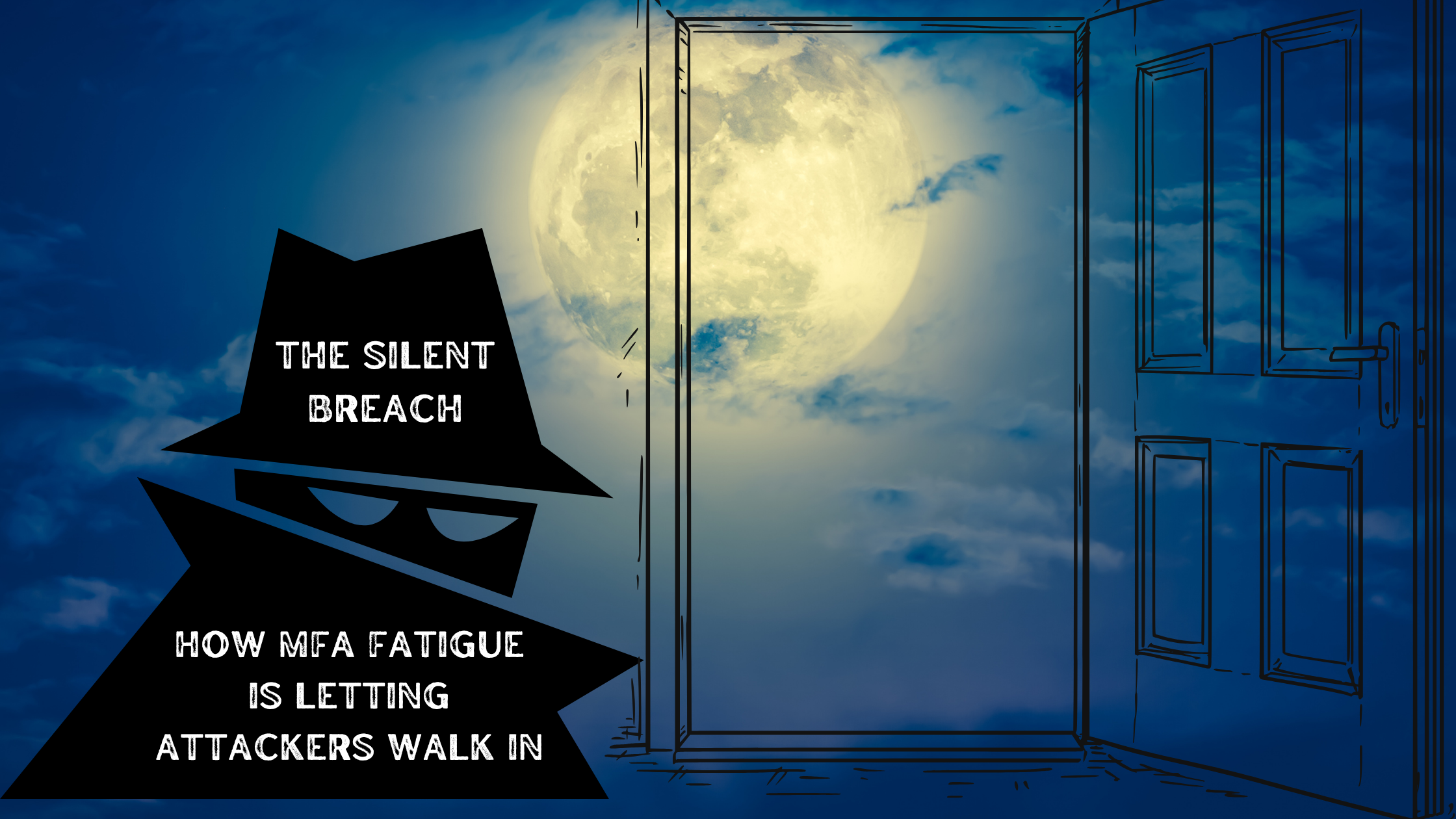Multi-factor authentication (MFA) was once seen as one of the best ways to protect accounts. Now, it’s a new entry point for attackers. In what’s called an MFA fatigue attack, hackers send repeated login requests hoping someone will get tired and just hit “Approve.” This tactic is now being used to bypass authentication in healthcare systems, legal environments, and cloud-based business platforms, especially in industries where staff are under pressure and distracted. This shift is a direct threat to operations, compliance and client trust.
What Is MFA Fatigue?
MFA fatigue, dubbed prompt bombing, happens when an attacker gets hold of a user’s valid credentials, typically through phishing or a credential leak, and then floods that user with MFA push requests. The goal is simple: wear them down until they approve one.This technique gained public attention when Uber was breached using this exact method. It’s since become a recurring theme in attacks on cloud-based environments like Microsoft 365 and Okta, according to reports by Microsoft and CISA. According to the Microsoft Digital Defense Report, there were about 6,000 MFA fatigue attempts per day in 2022–23.
In fast-paced industries like healthcare, logistics, and financial services, employees are often moving quickly and juggling multiple tasks. MFA fatigue attacks take advantage of this. When multi-factor authentication prompts appear on their phones several times a day, one unexpected request can easily be mistaken for a routine login or system check. That’s what makes this tactic effective. It doesn’t rely on malware or complex hacking techniques, just one distracted user clicking “Approve.” These cybersecurity threats turn trusted employees into accidental access points, putting sensitive data at risk and opening the door to unauthorized access.
How We Address MFA Fatigue at Systech MSP
Most MFA fatigue attacks happen because authentication settings aren’t managed closely enough. For clients in high-risk industries, we use number-matching authentication to stop the “one-tap approve” problem. We also set smart access rules that look at factors like location, time, and device trust, so strange login attempts get blocked or flagged. Our team runs real-life simulations so employees know how to spot a fake MFA request when it counts. We also review logs and settings on a regular schedule to catch and fix weak spots before they can be used by attackers.
Layered Cybersecurity Infrastructure
We regularly audit MFA logs and access policies for clients operating within layered cybersecurity infrastructures, environments where protection isn’t built around a single tool, but around the interplay of endpoint defense, identity management, threat detection, and user behavior monitoring. When authentication is part of a layered strategy, fatigue-based attacks lose their edge. It becomes harder for any single point of failure to result in full system compromise.
Our MFA configurations include contextual access rules, geo-based restrictions, and enforced number matching. We also implement detection policies that flag unusual patterns of repeated requests, especially from unfamiliar IPs or devices.
What You Should Do Now
If your organization relies on push notifications for MFA, and you haven’t reviewed your authentication logs or updated your MFA policies in over a year, it’s time to audit your security.
Let’s talk about hardening your identity perimeter, testing your access policies, and preventing an MFA request from becoming a breach entry point.
Systech MSP is already helping clients across healthcare, legal, finance, and other industries reduce exposure to social-engineered attacks. If you’re ready to audit your MFA setup or rework your cloud access policies, we’re ready to help.

